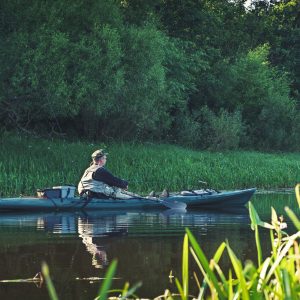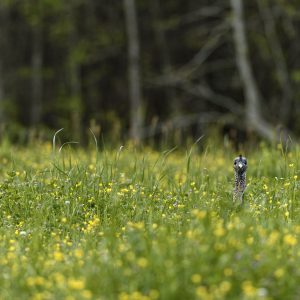Turkey nest destroyers: My 13-year old great niece recently chided me for always comparing the “times we live in now” to how it was “when I was their age.” My parents did the same thing when I was a teen, back in the 50’s and 60’s. The changing of times is a contrast for sure, but it also explains a lot. From a gamekeeper’s standpoint, land usage has seen a drastic re-prioritization. The 40 acre farms of last century are now mostly 40 acre pine plantations. The old homes where chickens and family pets roamed have transformed into abandoned gravel driveways and aging trees. The drastic change in land usage is both the reason and the bane for the resurgence in the numbers of Eastern wild turkeys. Throughout the article I’ll refer to “these” as “the old days.”
Restocking efforts for the eastern wild turkey came at a time when many small farms were going the way of the backyard blacksmith shop. All those things that happen on an abandoned farm, such as abandoned crop fields, aided in the nesting and expansion of wild turkey numbers. Birds flourished and hunters and conservation-minded peoples heralded a great success. Turkeys were back from the brink.
Fast forward to today, you are reading this article because you have an interest in wildlife and conservation as well.
If you are a turkey hunter you talk about flock success in terms of successful hatches. Your heart beats a little faster when you see a hen cross the road ahead of you with a dozen poults in tow. That hen was lucky, she managed to defeat the odds and hatch a full brood. Now, keeping them alive will be the challenge, but I’m getting ahead of myself.
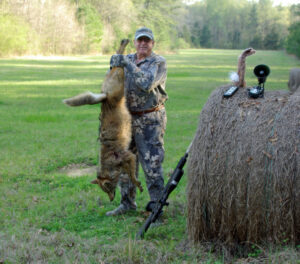 When I was a teenager there were a dozen men who coon hunted on our property. A creek ran through it and we planted corn, sweet potatoes, watermelons and cantaloupes. The houndsmen loved both the music of the night and the meat the raccoons furnished. Field larks, bob white quail, whippoorwills and turkeys nested in relative peace. Life was good.
When I was a teenager there were a dozen men who coon hunted on our property. A creek ran through it and we planted corn, sweet potatoes, watermelons and cantaloupes. The houndsmen loved both the music of the night and the meat the raccoons furnished. Field larks, bob white quail, whippoorwills and turkeys nested in relative peace. Life was good.
Today there may be one coon hunter in the entire county. He doesn’t kill the coons because his pleasure is the masked bandits going to the tree and “his hounds working.” Raccoon numbers are climbing. Fewer ground nesting birds are seen on the farm.
Modern timber management practices are a two-edged sword. Most thinning operations remove strips of timber leaving an equal amount of forest. Spraying herbicide removes undesirable trees and plants and allows the sun to shine in and permit early successional plants to flourish. A nesting and bugging place perfect for turkeys, or is it.
Raccoons may well be the top predator of turkey eggs. According to NWTF biologist, Tom Hughes, coons have learned that hens like to nest in those uncut strips where pine stands have been thinned. They travel downwind of each of the open strips until they catch the smell of a nest, then move in for the harvest. It’s a hunting method a mother coon passes on to her offspring. In short order the mother raccoon teaches her young this method and the nest robbing advances to the next generation. There is little a gamekeeper can do but to remove the raccoons on the front-end of the nesting season.
Supplemental feeding of deer can have the added bonus of removing raccoons. For about the same cost as a bag of Record Rack, game managers can purchase dog-proof, leg-hold coon traps. Set a couple or more around your feeder and soon you’ll be eliminating egg-eaters at an amazing rate. And you won’t believe how much of your “deer food” was being consumed by those masked-bandits.
Using sub-sonic .22 ammunition with a close-in head-shot dispatches the animal both quietly and efficiently. The carcasses can then be skinned, the meat eaten and the fur saved for sale.
The traps are super-simple. Once the trap is secured to a stake or tree, place a small amount of dry dog food in the bottom of the trap; set the trigger mechanism and leave the area alone overnight. If raccoons have been visiting your feeding station, they will be there the following morning. At one time we trapped 14 in two weeks. They became trap shy so we switched to sardines and caught another 9. We also caught a skunk (another turkey egg eater), who “extracted its revenge” on the surrounding area.
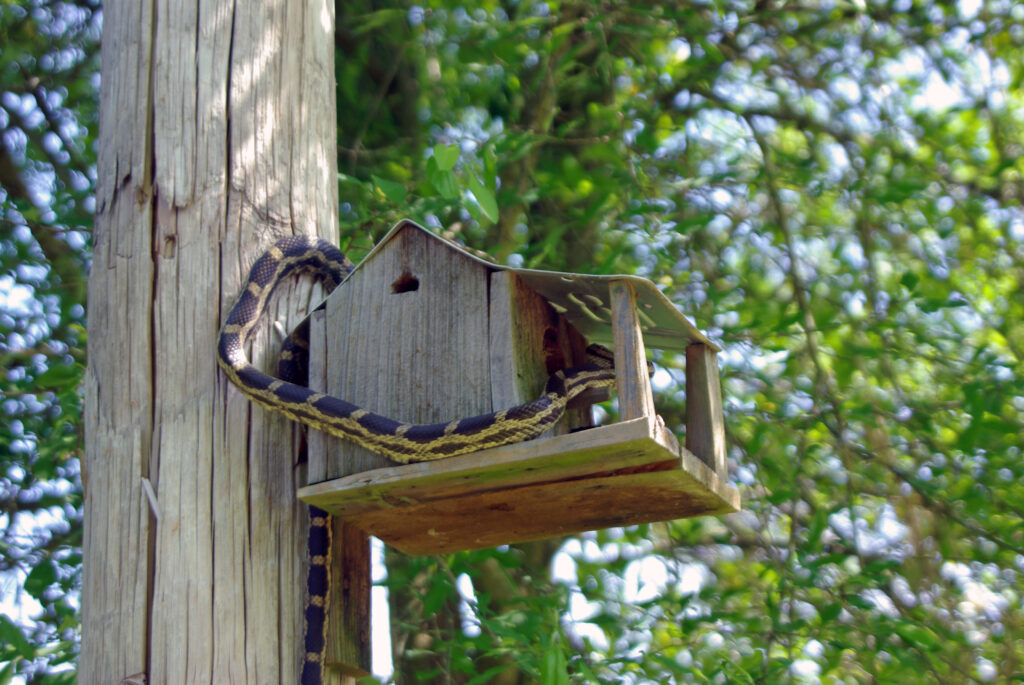
Raccoons are primarily nocturnal. During the day they will hole-up in hollow trees, hollow logs or even in squirrel nests. “My daddy taught me not to shoot a squirrel nest lest I kill the squirrel and it go to waste in the nest.” Instead we shook vines in those trees with nests and generally if a raccoon had taken residence there it would abandon the nest and flee up the tree. In the southeast, squirrel hunting is a fun activity in February. In addition to killing the masked bandits, a mess of squirrels for the stew pot becomes an added bonus. This type of hunting is also a method of teaching young people the importance of ethics and conservation.
The homely opossum is another creature that will consume turkey eggs and hatchlings. An “opportunist” who will consume whatever doesn’t consume it; the opossum is a very common nest destroyer. They can also be caught in dog-proof traps, but without the curiosity of the raccoon they are less likely to reach into the trigger area. Smaller steel traps will do the trick, but the set is a bit trickier.
Foxes raided the hen house on occasion; so we set traps and reduced the numbers. My .22 kept feral cats at bay. We killed every snake we saw, with the exception of King snakes and Black racers, which had a reputation of eating other snakes and mice. Grey rat snakes were just too fond of hen eggs to escape the assault. These days snakes are much less reviled and many people live the philosophy of “take three steps back and leave them alone.” In researching for this article I could find little evidence that snakes will destroy a clutch, but based on what a chicken snake/ rat snake can do in a hen house it is entirely possible. Personally I have watched rat snakes climb pine trees and raid the nests of red-cockaded woodpeckers. They also know what a bird house is and will raid them on a regular basis.
Coyotes were much less of a problem way back when, but they are prolific breeders and quick studies. The debate on whether coyotes are a “charming addition to the landscape” or a “boil on the butt of humanity” will continue to rage for years. In the winter 2017 GameKeeper issue, trapper and writer, Jill Easton, gave excellent information on trapping coyotes as well as foxes and bobcats. Both of these are also nest robbers and pose a real problem to young poults as well.
Most turkey hunters have at least one story of a bobcat or coyote attacking a decoy, or coming to a turkey call hoping to find a quick meal. I know of at least one hunter who was attacked by a bobcat and injured badly. While I uncovered no scientific evidence to prove the accusation, one older turkey hunter claims coyotes will follow hens to their nest in late spring then devour their eggs.
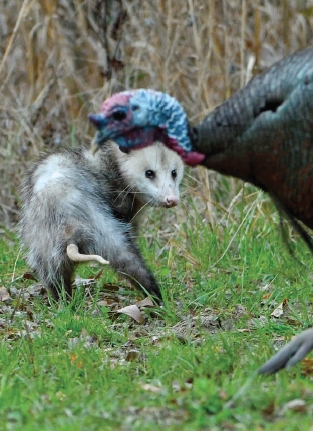 Song dogs respond pretty well to calling. Over time, however, they could become call shy, so hunters have to keep upping their game for success. Dying rabbit calls have long been the standard by which all coyote calls are judged, they work, but can become stale after a few dogs get fooled. Keep in mind that most states allow coyote hunting on private land 24/7/365. In my home state of Mississippi they fall into the category of “nuisance animals,” and may be shot on private land at any time.
Song dogs respond pretty well to calling. Over time, however, they could become call shy, so hunters have to keep upping their game for success. Dying rabbit calls have long been the standard by which all coyote calls are judged, they work, but can become stale after a few dogs get fooled. Keep in mind that most states allow coyote hunting on private land 24/7/365. In my home state of Mississippi they fall into the category of “nuisance animals,” and may be shot on private land at any time.
With that said a savvy predator hunter might create a “lost hen” or “distressed poult” call/decoy and use it in the spring with good results. A turkey chick that is lost from the others will make a loud “peep-peep-peep” to elicit a call from its mother. The mother will answer with a cluck to help the chick find her. If this goes on for very long, coyotes, bobcats and even hawks will respond, looking for an easy meal.
If trapping and varmint shooting are not your passion, then ask around for the name of a trapper or hunter and allow them access to your farm on a limited basis. In the end, you both accomplish a goal and have some fun. Many states have a trappers’ association, so a simple Google search might lead you in the right direction. Your state conservation agency may also have useful information on regulations and other particulars.
“Since I began trapping in 1997 on our farm and on neighboring properties, I have seen a direct correlation in the partial or total removal of predators and higher poult/fawn recruitment numbers,” Derick Vance of Madison County Mississippi said. “Not only have I personally witnessed this, other land owners who have made a concerted effort have the same results. In the spirit of conservation, removing both nest predators and other large game predators gives both turkey and deer the greatest chance of survival.”
No doubt many of you have enjoyed the award winning photography of Gamekeepers contributor Tes Jolly, of Alabama. A former turkey hunting guide and life-long conservation student, Tes has seen the scourge that feral hogs can have on the environment and every ecosystem they enter. Tes points to one study which proves hogs have a direct impact on turkey nests.
“Once a hog locates a nest, it will return to that nest regularly to see if more eggs have been laid,” said Jolly. “Stomach content studies of hogs have found turkey shells, embryos, and hatchlings as well.”
The removal of these feral pigs is an ongoing effort, and eradication is the only solution. They are not a species to be managed or glorified. Trapping on a large scale remains the best means of lessening the population – especially when neighboring landowners work in concert toward the common goal.
There is another method of increasing nesting success. Used in conjunction with predator removal, it is a tried and true practice – increase the acreage allotted to nesting habitat. Set aside a greater portion of property, maybe a piece you might ordinarily include in a spring burn.
Don’t try to be too fastidious with your property. If a tree is older and falls in the edge of a field this winter, leave it until next winter. Once the grass and weeds grow in and around the top, the area will be a nesting magnet. The same holds true for those land owners practicing hinge cutting, where the tree may remain alive or partially alive while resting on the forest floor.
Widening the buffer along fence rows and ditch banks is another method of adding a few acres to the nesting effort. It’s easy to leave food plot corners and wood lines more natural. Next year you can clean up that spot and leave another to attract hens.
There are other critters that prey on turkeys, and these must be left unharmed. Hawks, eagles, black bears and large cats will take a turkey or eggs from time to time. These creatures are protected by closed seasons and/or bag limits. Eliminating the lesser predators will be the best option. Neighbor or free-ranging dogs will take can take a few eggs, as will feral or free-ranging house cats. Wild dogs and cats are a menace to song birds as well as wild game. Their numbers should also be controlled. Fire ants are another nest destroyer that will wait until the eggs are just hatching then kill and consume the entire clutch.
Re-nesting after a nest has been destroyed does occur when the hen survives. According to Tom Hughes with the NWTF the best chance of re-nesting will be in those cases where the nest was destroyed early in the spring. Hunting pressure on gobblers appears to have little effect on nesting protocol.
So there you have it. Decreased predation, plus enhanced habitat, equals more birds nesting, more poults hatching, and more birds surviving to adulthood. And who doesn’t like more turkeys strutting in the summer sun, and providing the morning music of the waking dawn.


